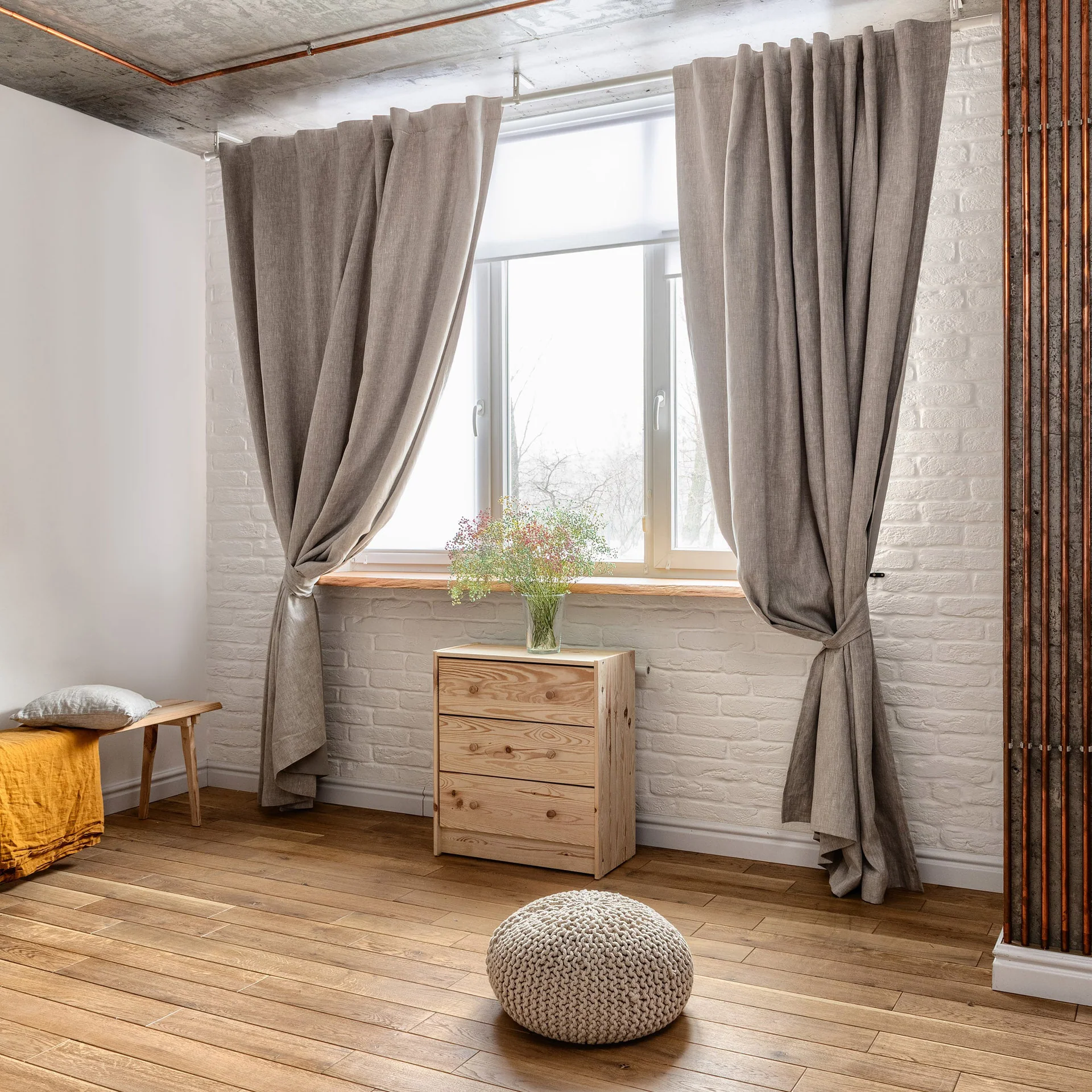Curtains can be a versatile and functional addition to any room, serving both aesthetic and practical purposes. Here are some aspects to consider when choosing curtains:
Types of Curtains
- Panel Pair: Consists of two separate curtain panels. This type is great for windows that you open and close frequently.
- Single Panel: A single curtain panel that covers the entire window. Ideal for smaller windows or a more modern look.
- Valance: A short curtain that hangs at the top of the window. Often used in combination with blinds or shades.
- Window Tier: Short curtains that cover only the lower half of the window. Common in kitchens or bathrooms.
- Blackout Curtains: Made with a special lining to block out light. Perfect for bedrooms or media rooms.
- Sheer Curtains: Lightweight and airy, allowing light to pass through while providing some privacy.
- Grommet: Curtains with large metal rings at the top for easy sliding along the rod.
- Rod Pocket: Curtains with a sewn-in pocket at the top that slides over the curtain rod.
- Tab Top: Curtains with loops (or tabs) at the top that slide over the rod, often giving a casual look.
Materials
- Cotton: Versatile and easy to clean. Suitable for a relaxed, casual look.
- Linen: Light and airy, offering a more elegant, natural appearance.
- Silk: Luxurious and elegant, though it may require dry cleaning.
- Velvet: Heavy and insulating, great for blocking light and adding a touch of luxury.
- Polyester: Durable and affordable, often used for its easy maintenance.
Patterns and Colors
- Solid Colors: Can make a room feel more spacious and are easier to match with existing decor.
- Patterns: Add visual interest and can serve as a focal point in a room. Common patterns include stripes, florals, geometric designs, and abstract prints.
- Neutral Colors: Offer versatility and timeless appeal.
- Bold Colors: Make a statement and can enhance the room’s mood and energy.
Functional Considerations
- Privacy: Choose thicker fabrics or blackout curtains for maximum privacy.
- Light Control: Sheer curtains allow light in, while blackout curtains block it entirely.
- Insulation: Heavier fabrics like velvet or lined curtains can help insulate your home, keeping it warmer in winter and cooler in summer.
- Noise Reduction: Thicker curtains can also help reduce noise from outside.
Measuring and Installation
- Width: Measure the width of your window and add extra for fullness (typically 1.5 to 3 times the window’s width).
- Length: Curtains can hang just above the window sill, below the window sill, or to the floor. Floor-length curtains can either just touch the floor or puddle slightly.
- Mounting: Curtains can be mounted inside the window frame, on the frame, or above the frame. Mounting them higher can create the illusion of taller windows and a higher ceiling.
Choosing the right curtains involves considering the function, style, and specific needs of your space. Whether you’re looking to add a touch of elegance, create a cozy atmosphere, or improve privacy and light control, there’s a perfect set of curtains for every room.
4o







